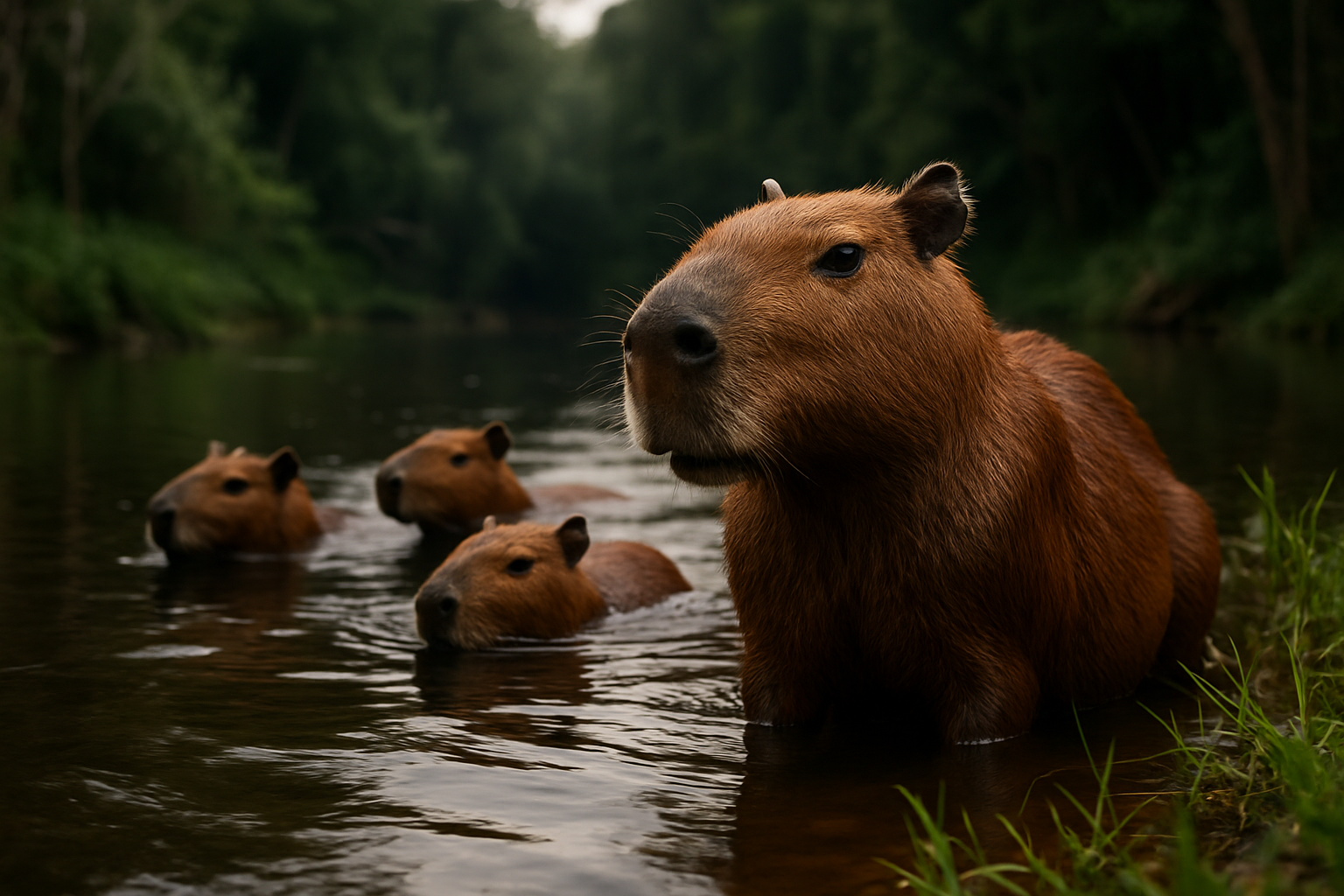The Surprising World of Capybara Companionship
Imagine a pet that's part giant guinea pig, part aquatic adventurer, and entirely charming. Enter the capybara, the world's largest rodent and an increasingly popular exotic pet. These social, semi-aquatic creatures from South America are capturing hearts and challenging traditional notions of domestic animal companionship. But what does it really take to welcome a capybara into your home?

The Capybara: Nature’s Gentle Giant
Capybaras, scientifically known as Hydrochoerus hydrochaeris, are native to South America’s wetlands, grasslands, and forests. These barrel-shaped mammals can grow up to 4 feet long and weigh up to 150 pounds. Their semi-aquatic nature is evident in their webbed toes and eyes and nostrils positioned high on their heads, allowing them to stay mostly submerged while swimming.
In the wild, capybaras live in social groups of 10 to 20 individuals, highlighting their need for companionship. They’re herbivores with a diet primarily consisting of grasses and aquatic plants. Their social nature and herbivorous diet play crucial roles in their care as pets.
Legal Considerations and Ethical Concerns
Before considering a capybara as a pet, it’s essential to understand the legal landscape. In many countries and regions, owning a capybara is illegal or requires special permits. In the United States, laws vary by state, with some allowing capybara ownership and others strictly prohibiting it.
Ethical concerns also arise when keeping exotic animals as pets. Critics argue that capybaras, being wild animals, should not be domesticated. There are valid concerns about the impact on wild populations and the ability of owners to meet the complex needs of these animals in captivity.
Creating a Capybara-Friendly Habitat
For those in areas where capybara ownership is legal and who have carefully considered the ethical implications, creating an appropriate habitat is paramount. Capybaras require significant space, both indoors and outdoors. A large, securely fenced yard with a pool or pond is essential, as these animals love to swim and wallow in water.
Indoor spaces should be capybara-proofed, much like one would prepare for a large, curious dog. Chew-resistant materials are a must, as capybaras have strong teeth that continually grow. Temperature control is crucial, as capybaras are sensitive to extreme heat and cold.
Diet and Health Considerations
Maintaining a proper diet for a pet capybara is challenging and vital for their health. Their diet should consist primarily of grass hay, supplemented with fresh vegetables and specially formulated pellets. Access to fresh water for drinking and swimming is crucial.
Regular veterinary care is essential, but finding a vet experienced with capybaras can be difficult. They require specific vaccinations and are prone to certain health issues, including dental problems and parasites. Owners must be prepared for potentially high medical costs and the challenge of finding specialized care.
Social Needs and Behavioral Training
Capybaras are highly social animals that thrive on interaction. In captivity, they often bond closely with their human family members but may also benefit from the companionship of other animals. However, their social nature can lead to behavioral issues if not properly addressed.
Training a capybara requires patience and consistency. They can learn basic commands and even be litter box trained, but their intelligence also means they can be stubborn and challenging to manage. Positive reinforcement techniques work best, and early socialization is crucial for developing a well-adjusted pet.
The Financial Commitment
Owning a capybara is a significant financial undertaking. The initial cost of purchasing a capybara can range from $3,000 to $5,000 or more, depending on availability and breeder reputation. However, this is just the beginning of the investment.
The cost of creating and maintaining a suitable habitat, providing a proper diet, and ensuring regular veterinary care can easily amount to thousands of dollars annually. Potential owners must be prepared for a long-term financial commitment, as capybaras can live up to 12 years in captivity.
Impact on the Pet Industry and Conservation
The growing interest in capybaras as pets has had a ripple effect on the exotic pet industry. Specialized breeders, unique pet supplies, and veterinary services catering to exotic animals have seen increased demand. This trend has also sparked discussions about responsible pet ownership and the need for stricter regulations in the exotic pet trade.
Conservation efforts have been impacted as well. While captive breeding programs can potentially aid in species preservation, there are concerns about the sustainability of wild populations if demand for pet capybaras continues to rise. Responsible ownership and support for conservation initiatives are crucial for balancing human fascination with these animals and their welfare in the wild.
In conclusion, while capybaras can make unique and affectionate companions, potential owners must carefully consider the legal, ethical, practical, and financial implications of this commitment. As with any exotic pet, responsible ownership requires extensive research, preparation, and a genuine dedication to providing the best possible care for these remarkable creatures.





